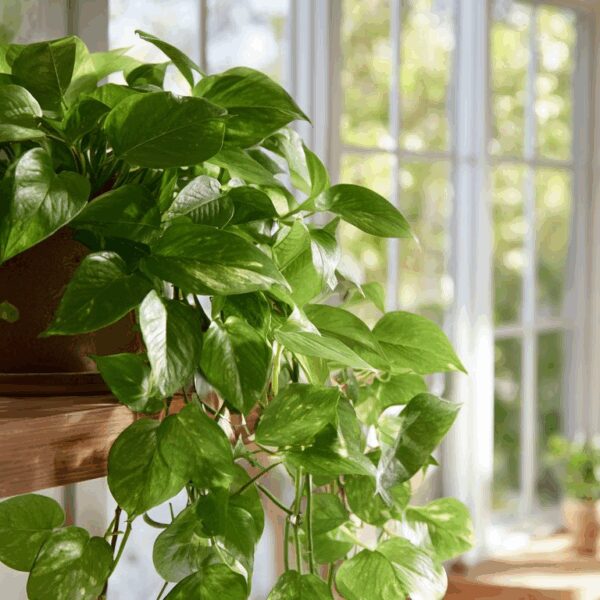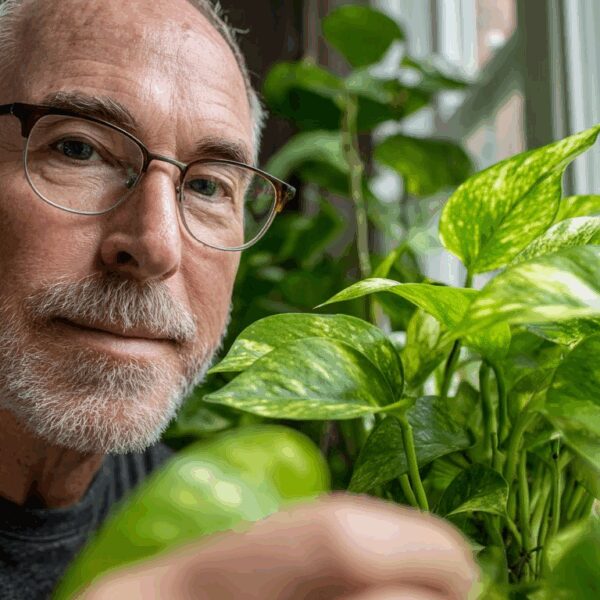As the crisp air of fall settles in, it’s easy to forget how much our tropical friends crave that cozy humidity. And trust me, when the heat kicks on, those poor plants can start feeling like they’re in a desert—let’s make sure they stay lush and happy this season!
🌱 Green Thumb Essentials in 4 Points:
- Humidity is Key! Tropical plants like pothos and peace lilies thrive in 50-70% humidity. When heaters kick on, that can drop below 30%. Watch for curled leaves or browning edges—those are SOS signals!
- Group Hug for Plants! Cluster your tropical friends together. They’ll create a cozy, humid microclimate just by being close—it’s like a plant party! 🎉
- Ditch the Cold Water When watering, stick to room temp. Cold water can shock your plants’ roots. And remember, check the soil first; if it’s dry an inch down, then it’s watering time.
- Gentle Feeding Cut back on fertilizers as temps drop. Dilute your usual mixes to half or even a quarter strength every month or two. Your plants will still get the love they need without being overwhelmed.
The Humidity Trap for Tropical Plants
As we move into the chilly months of October, many of us are enjoying the beauty of fall. But for those with tropical plants at home, it’s a different story. When the heat kicks on, it can create a dry environment that spells trouble for your plant buddies. You might be surprised how quickly humidity levels drop when the furnace starts running. So, let’s chat about how to keep your tropical plants happy and thriving despite the change in season.
Understanding Humidity Needs Tropical plants like pothos, peace lilies, and snake plants thrive in humid conditions—typically around 50% to 70% humidity. When you crank up the heat, though, that can drop to below 30%, which is a big problem. If you notice your plant leaves curling or turning brown at the edges, this could be a red flag that they’re suffering from too much dryness.
Easy Ways to Boost Humidity
So, what can you do? There are several simple strategies to help maintain humidity levels:
1. Use a Humidifier One of the most effective ways is to invest in a small room humidifier. They’re relatively inexpensive and can work wonders for your indoor garden. Place it near your tropical plants to create a microclimate they love.
Why Bottom Watering Changed Everything for My Succulents
2. Group Your Plants Together Plants naturally release moisture through transpiration. By clustering them together, you create a mini ecosystem where they can benefit from each other’s humidity output.
3. Pebble Trays If you’re looking for a DIY solution, try placing your pots on trays filled with pebbles and water—just make sure the bottom of the pot isn’t sitting directly in water! As the water evaporates, it increases humidity around your plants.
Watering Wisely
This time of year, it’s all too easy to overwater your tropical friends since they might not need as much moisture when they’re not growing as vigorously. But don’t forget about humidity! Here’s how to balance both:
Check Soil Moisture Stick your finger about an inch into the soil before watering. If it feels dry at that depth, it’s time for a drink. Always err on the side of underwatering rather than overwatering—your plants will thank you!
Avoid Cold Water When you’re watering, use room temperature water instead of cold tap water to avoid shocking their roots.
The Right Time for Fertilizer
If you’ve been using chemical fertilizers like Miracle-Gro during summer growth spurts, consider scaling back as temperatures drop and growth slows down. Tropical plants still need nutrients but at reduced rates in fall and winter:
Pacing Yourself Dilute fertilizer solutions more than usual—try half-strength or even quarter-strength once every month or two during these cooler months.
A Little Extra TLC
Tropical plants can be sensitive to sudden changes not just in temperature but also light conditions as days get shorter:
Avoid Drafts Keep them away from heating vents and drafty windows where temperature fluctuations are common.
Lamp Love If natural light is scarce in winter months (and it often is), consider adding grow lights to keep them energized through those gray days.
This is also an ideal time to check for pests like spider mites which thrive in low humidity! Regularly inspect the undersides of leaves and treat any infestations promptly with neem oil or insecticidal soap.
Your tropical plants deserve care and attention year-round—even when temperatures dip! By keeping an eye on humidity levels and adjusting your care routines accordingly, you’ll help them stay lush and vibrant throughout the season.







